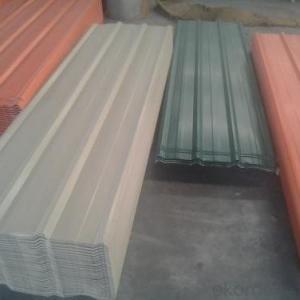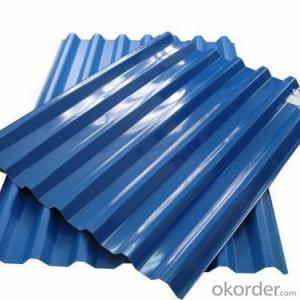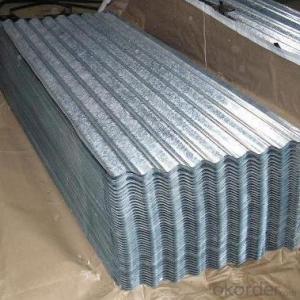FRP pultruded grating with Anti-flammable on sales
- Loading Port:
- Tianjin
- Payment Terms:
- TT OR LC
- Min Order Qty:
- 4000 m.t.
- Supply Capability:
- 100000 m.t./month
- Option:
- Product(FRP) Raw material(Glass Fiber) Thickness(1.2-2.5mm)
OKorder Service Pledge
OKorder Financial Service
You Might Also Like
Item specifice
PRODUCT DESCRIPTION
Pultruded grating is made by a particular assembly process, which using “I” shape as its main load-bearing and special rod to go through the bearing bar. Pultruded grating include the standard grating and the custom grating, the custom grating can be designed to meet customer’s requirement or special using condition by changing the shape, size and space of the bearing bars, the surface can be covered with lozenge panel, grit panel, or added the anti-slippery sand directly.
FRP pultruded grating has the most characteristics of molded grating, but it has its distinct advantages, it has very high fiberglass content in the loading direction, so it has very high load capability, it has more superiority when used at wide span, so that the basic support will be decreased and the project cost will be reduced accordingly.
SPECIFICATION
Thickness (mm) | Bar width (mm) | Open space (mm) | Open rate (%) | Approx weight (kg/m |
25.4 | 15.2 | 22.8 | 60 | 13.2 |
25.4 | 15.2 | 15.2 | 50 | 15.9 |
25.4 | 15.2 | 10.1 | 40 | 18.5 |
25.4 | 40 | 10.8 | 21 | 14.5 |
38.1 | 15.2 | 22.8 | 60 | 15.8 |
38.1 | 15.2 | 15.2 | 50 | 19.1 |
38.1 | 15.2 | 10.1 | 40 | 22.4 |
50.8 | 25.4 | 25.4 | 50 | 16.6 |
50.8 | 25.4 | 12.7 | 33 | 21.1 |
CHOICE FOR PULTRUDED GRATING
Resin: GP resin, ISO resin, VE resin, Phenol resin
Color choice: Yellow, gray, green, custom color
Surface choice: Groove surface, grit surface, lozenge cover surface
FEATURES
a. Anti-corrosion and anti-rust
b. Light weight and high strength
c. Anti-flammable
d. Anti- fatigue
e. Safe and anti-slippery
f. Anti-ageing
g. Easy of maintenance
h. Excellent electromagnetism property
i. Good economic benefit
FIELDS SERVED
Sewage treatment,
water supply and drainage,
chemical industry,
oil industry,
power engineering,
pulp and paper,
construction engineering,
spinning, marine engineering.
APPLICATION
Operation terrace,
stair walkway,
ground floor,
trench cover,
sidewalk,
foot bridge,
equipment safety fence,
scaffold.
COMPANT DESCRIPTION
CNBM,China National Building Materials Group is a state-owned enterprise in charge of administrative affairs in china building materials industry. Established in 1984, CNBM is a large group corporation of building materials with total assets of 25 billion RMB and a total staff of 30,000.CNBM now owns 200 subordinating firms of solely owned and joint-venture companies.
CNBM International Corporation is one subsidiary of CNBM, we focus on offering good-quality products,professional service and complete solution to our customers. Strong delivery capacity, advanced technology& management, strong financing capability and excellent after-sale service are our advantages in sharing international market.
FAQ
1.Q:Are you factory or trading company ?
A:We are Factory produce FRP machines and FRP products.
2.Q:If can customized by customers requirements?
A:yes,we can produce the machine with customized size.
3.Q:How about the payment?
A:We accept any kind of payment.
4.Q:What is the guarantee?
A:Gurantee is one year.
5.Q:If you can training?
A:yes ,we can training in our factory also can send engineers to your factory training.
PICTURES
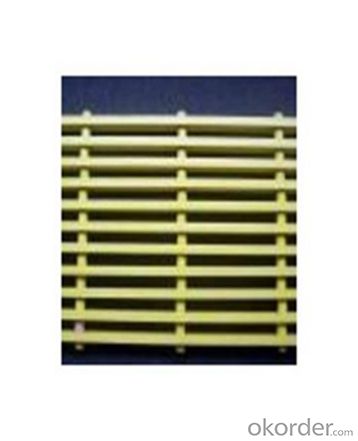
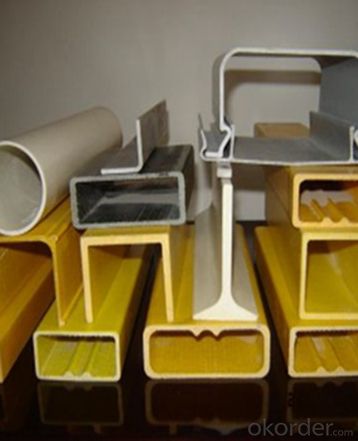
- Q:What are the typical lifespan of FRP pultrusion profiles?
- The typical lifespan of FRP (Fiber Reinforced Polymer) pultrusion profiles can vary depending on various factors such as the quality of materials used, environmental conditions, and the specific application in which they are used. However, on average, FRP pultrusion profiles have a lifespan of 25 to 30 years. FRP pultrusion profiles are known for their durability and resistance to corrosion, rot, and UV radiation, which contributes to their extended lifespan. The use of high-quality resins and fibers in the manufacturing process ensures that the profiles can withstand harsh conditions and maintain their structural integrity over time. It is important to note that proper installation, regular maintenance, and adherence to recommended usage guidelines can further enhance the lifespan of FRP pultrusion profiles. Additionally, factors such as exposure to extreme temperatures, chemical exposure, and mechanical stress can affect the lifespan of these profiles. Overall, FRP pultrusion profiles offer a reliable and long-lasting solution for various applications in industries such as construction, infrastructure, transportation, and marine.
- Q:Are FRP pultrusion profiles resistant to termites?
- FRP pultrusion profiles are typically immune to termites. Termites mainly consume materials that contain cellulose, such as wood. However, FRP pultrusion profiles, composed of resin and glass fibers, lack cellulose and are hence unappealing to termites. As a result, FRP pultrusion profiles offer an excellent substitute for conventional wooden profiles in situations that demand termite resistance, like building construction and outdoor structures. Furthermore, FRP profiles demonstrate resistance against decay, corrosion, and various environmental elements, rendering them a robust and enduring material option.
- Q:Are FRP pultrusion profiles resistant to chemicals used in agricultural applications?
- Yes, FRP pultrusion profiles are generally resistant to chemicals used in agricultural applications. FRP (Fiber Reinforced Polymer) composites have excellent chemical resistance properties, making them suitable for various agricultural environments. These profiles can withstand exposure to fertilizers, pesticides, herbicides, and other chemicals commonly used in agricultural applications without experiencing degradation or damage.
- Q:What types of materials are commonly used in FRP pultrusion?
- The manufacturing process of FRP pultrusion involves pulling continuous fibers through a resin bath and then through a heated die, resulting in a composite material with high strength and stiffness. Different types of materials are commonly used in FRP pultrusion, depending on the specific application and desired properties. 1. Fibers: Fiberglass (glass-reinforced polymer) and carbon fibers are the most commonly used in FRP pultrusion. Fiberglass is cost-effective, lightweight, and offers good strength and corrosion resistance. Carbon fibers, on the other hand, are more expensive but provide exceptional strength, stiffness, and lightweight properties. 2. Resins: The resin matrix used in FRP pultrusion provides rigidity and protection against environmental factors. Polyester resin is the most commonly used due to its low cost, ease of handling, and good mechanical properties. Vinyl ester resin is another popular choice, offering improved chemical resistance and heat tolerance compared to polyester. Epoxy resin is used when high strength and durability are required. 3. Additives: The resin matrix can be enhanced with various additives to improve specific properties of the FRP pultruded product. UV stabilizers are commonly used to protect against ultraviolet degradation. Flame retardants can be added to increase fire resistance. Other additives like pigments, fillers, and mold release agents may also be used to achieve desired aesthetics and processing characteristics. By selecting the appropriate combination of fibers, resins, and additives, FRP pultrusion can produce a wide range of composite materials with tailored properties to meet specific application requirements. This versatility in material selection is one of the key advantages of FRP pultrusion, making it suitable for industries such as construction, infrastructure, aerospace, automotive, and marine.
- Q:FRP pultrusion process?
- Pultruded glass steel is mainly using unsaturated polyester resin, Yuezhanla extrusion molding process more than 90% in addition to the amount of resin, epoxy resin, vinyl resin, thermosetting resin, propionic acid modified phenolic resin, flame retardant resin etc..
- Q:Are FRP pultrusion profiles resistant to seismic activity?
- FRP (Fiber Reinforced Polymer) pultrusion profiles are known for their high strength-to-weight ratio and excellent mechanical properties. However, when it comes to seismic activity, their resistance depends on various factors. In general, FRP pultrusion profiles can exhibit good resistance to seismic activity due to their inherent properties. The composite materials used in their construction, such as fiberglass and resin, offer high tensile strength and stiffness, making them capable of withstanding dynamic loads caused by earthquakes. Moreover, FRP pultrusion profiles have been extensively tested and proven to possess excellent fatigue resistance. This property is crucial during seismic events as structures are subjected to repeated dynamic loading. The ability of FRP profiles to withstand cyclic loading without suffering from fatigue failure significantly enhances their seismic resistance compared to traditional materials like steel or concrete. Another advantage of FRP pultrusion profiles in seismic activity is their lightweight nature. Their low weight reduces the overall mass of the structure, resulting in lower seismic forces. This weight reduction can lead to reduced seismic responses and less damage during an earthquake. However, it is important to note that the seismic resistance of FRP pultrusion profiles can be influenced by various factors. These include the design and quality of the profiles, the connection details, and the overall structural system in which they are used. Proper engineering and design considerations must be taken into account to ensure optimal performance and seismic resistance. In conclusion, FRP pultrusion profiles have the potential to offer good resistance to seismic activity due to their high strength, stiffness, and fatigue resistance. However, their performance in seismic events depends on various factors, and careful design and engineering practices are essential to maximize their seismic resistance.
- Q:Can FRP pultrusion profiles be used in chemical processing plants?
- Yes, FRP (Fiber Reinforced Polymer) pultrusion profiles can be utilized in chemical processing plants. FRP is resistant to corrosion, chemicals, and extreme temperatures, making it an ideal material choice in such environments. Additionally, FRP pultrusion profiles offer high strength-to-weight ratio and low maintenance requirements, making them suitable for various applications within chemical processing plants.
- Q:Are FRP pultrusion profiles resistant to mold and mildew?
- FRP pultrusion profiles are known for their ability to resist mold and mildew. Made from a composite material consisting of a reinforced polymer matrix with fibers, usually glass fibers, FRP is unlike organic materials like wood or traditional plastics because it does not create a suitable environment for mold and mildew to thrive. The properties inherent in FRP, such as its non-porous nature and resistance to moisture absorption, contribute to its exceptional resistance to mold and mildew. Moreover, FRP pultrusion profiles are often manufactured with a smooth and glossy surface, further discouraging the growth of mold and mildew. In addition, FRP is chemically inert, meaning it does not react with most substances. This quality makes FRP profiles highly resistant to chemical attacks that could promote the growth of mold and mildew. Consequently, FRP pultrusions are frequently utilized in environments with high moisture and humidity levels, including bathrooms, swimming pools, and outdoor applications. Nevertheless, it is crucial to recognize that while FRP is resistant to mold and mildew, it is not entirely impervious. In extreme conditions where moisture levels remain consistently high and proper maintenance is neglected, there is still a possibility of mold and mildew growth. To ensure the longevity and resistance of FRP pultrusion profiles to mold and mildew, regular cleaning and maintenance are recommended.
- Q:What are the different shapes and sizes of FRP pultrusion profiles available?
- FRP pultrusion profiles are available in a wide range of shapes and sizes. Some common shapes include I-beams, square tubes, round tubes, angles, channels, flat bars, and rods. These profiles can vary in size, with dimensions ranging from small cross-sections to larger and more robust profiles. The availability of different shapes and sizes allows for versatility in various applications, catering to different structural requirements and design needs.
- Q:Can FRP pultrusion profiles be used in agricultural structures?
- Yes, FRP pultrusion profiles can certainly be used in agricultural structures. They offer several advantages such as high strength-to-weight ratio, corrosion resistance, and durability, making them suitable for various applications in the agricultural industry. These profiles can be used in structures like greenhouse frames, livestock enclosures, support beams, fencing, and other agricultural infrastructure.
1. Manufacturer Overview |
|
|---|---|
| Location | |
| Year Established | |
| Annual Output Value | |
| Main Markets | |
| Company Certifications | |
2. Manufacturer Certificates |
|
|---|---|
| a) Certification Name | |
| Range | |
| Reference | |
| Validity Period | |
3. Manufacturer Capability |
|
|---|---|
| a)Trade Capacity | |
| Nearest Port | |
| Export Percentage | |
| No.of Employees in Trade Department | |
| Language Spoken: | |
| b)Factory Information | |
| Factory Size: | |
| No. of Production Lines | |
| Contract Manufacturing | |
| Product Price Range | |
Send your message to us
FRP pultruded grating with Anti-flammable on sales
- Loading Port:
- Tianjin
- Payment Terms:
- TT OR LC
- Min Order Qty:
- 4000 m.t.
- Supply Capability:
- 100000 m.t./month
- Option:
- Product(FRP) Raw material(Glass Fiber) Thickness(1.2-2.5mm)
OKorder Service Pledge
OKorder Financial Service
Similar products
New products
Hot products
Related keywords
